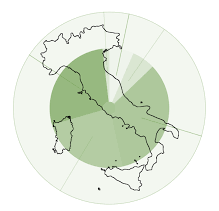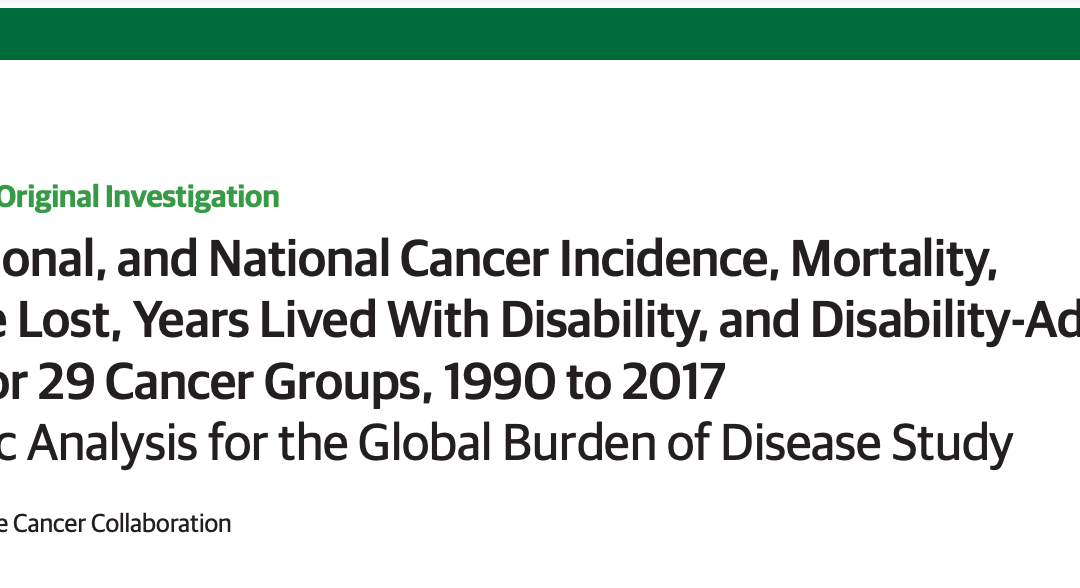Using data from the Global Burden of Disease Study 2017, we tracked Italy cancers in 2017 and trends for this disease over the past three decades. Specifically, we provided estimates of incidence (number of cases diagnosed per year), mortality (number of deaths per year), years of life lost due to premature death (YLL), years lived with disability (YLD), and years of life lost due to disability or premature death (disability-adjusted life-years, DALYs) for all cancers overall and for 30 specific cancer sites in 2017. We analyzed trends in mortality for major cancers between 1990 and 2017. In 2017 there were 254,336 new cancer cases in men and 214,994 in women, with corresponding age-standardized incidence rates of 438 and 330/100,000, respectively. Between 1990 and 2017, new cancer cases and, to a lesser extent, corresponding incidence rates increased significantly for all cancers overall and for most cancers considered; however, incidence rates decreased significantly for lung neoplasms and other tobacco smoke-related neoplasms. In 2017, there were 101,659 cancer deaths in men (age-standardized death rate, 158.5/100,000) and 78,918 in women (93.9/100,000). Cancer deaths increased significantly between 1990 and 2017 (+18%), but the standardized mortality rate decreased significantly (-28%). Deaths increased significantly for many cancers, but decreased for cancers of the stomach, esophagus, larynx, testicles, and Hodgkin’s lymphoma. Standardized mortality rates decreased significantly for most cancers, with the particular exception of pancreatic and uterine cancers and multiple myeloma. In 2017, cancers caused 3,204,000 DALYs. Between 1990 and 2017, DALYs and corresponding age-standardized rates decreased significantly (-3.4% and -33%, respectively).
In conclusion, our study showed that age-standardized mortality rates for cancer in Italy have shown favorable trends in recent decades. On the contrary, however, the absolute number of cancer cases and, to a lesser extent, the number of cancer deaths have increased, probably due to an aging population. These findings underscore the need for continued effort in prevention, early detection, and improvement in treatments to further control and reduce the burden of this disease, both in terms of disability and premature mortality.
Quote:
Global Burden of Disease Cancer Collaboration, Fitzmaurice C, Abbot D, et al. Global, Regional, and National Cancer Incidence, Mortality, Years of Life Lost, Years Lived With Disability, and Disability-Adjusted Life-Years for 29 Cancer Groups, 1990 to 2017: A Systematic Analysis for the Global Burden of Disease Study [published correction appears in JAMA Oncol. 2020 Mar 1;6(3):444] [published correction appears in JAMA Oncol. 2020 May 1;6(5):789] [published correction appears in JAMA Oncol. 2021 Mar 1;7(3):466]. JAMA Oncol. 2019;5(12):1749-1768.
doi:10.1001/jamaoncol.2019.2996

